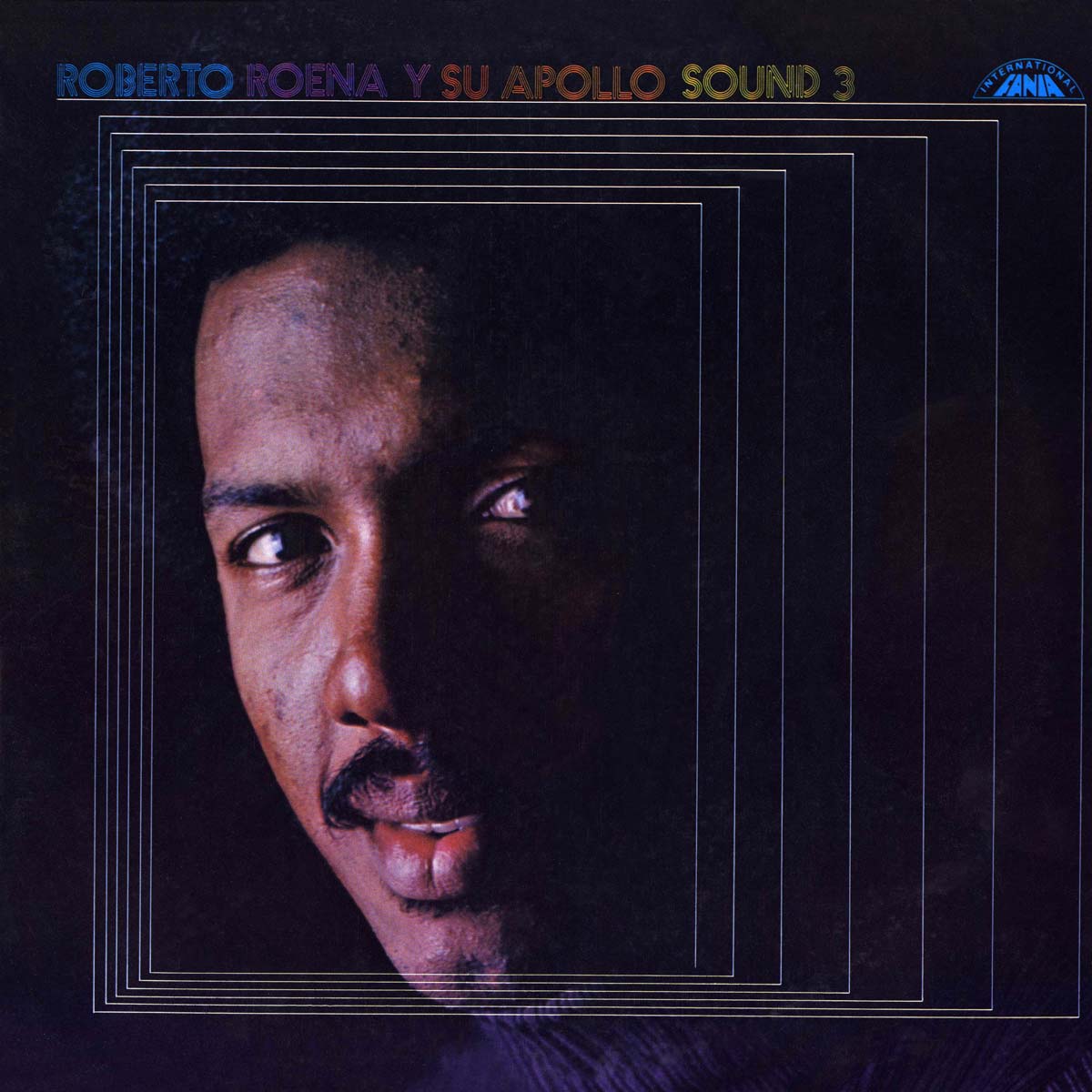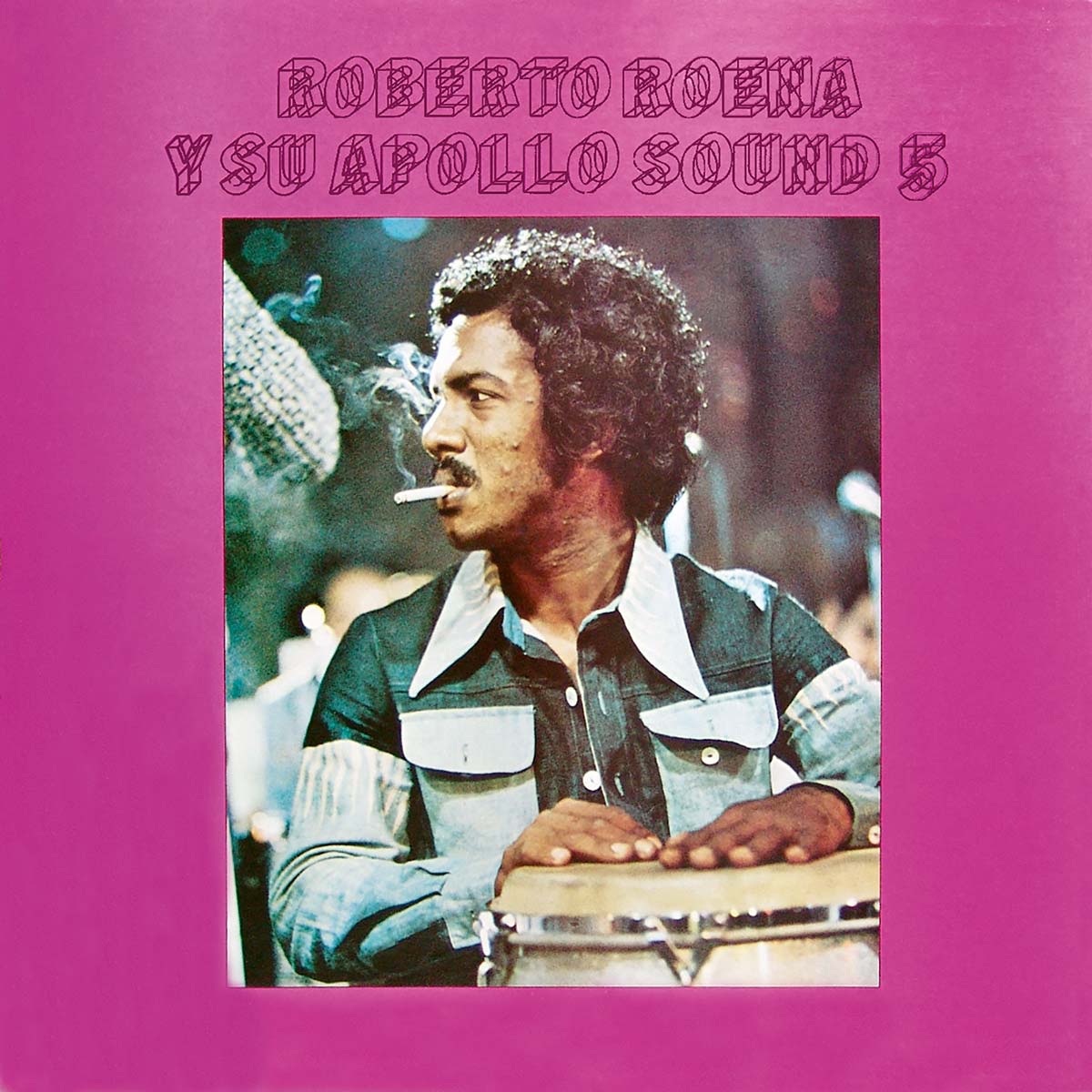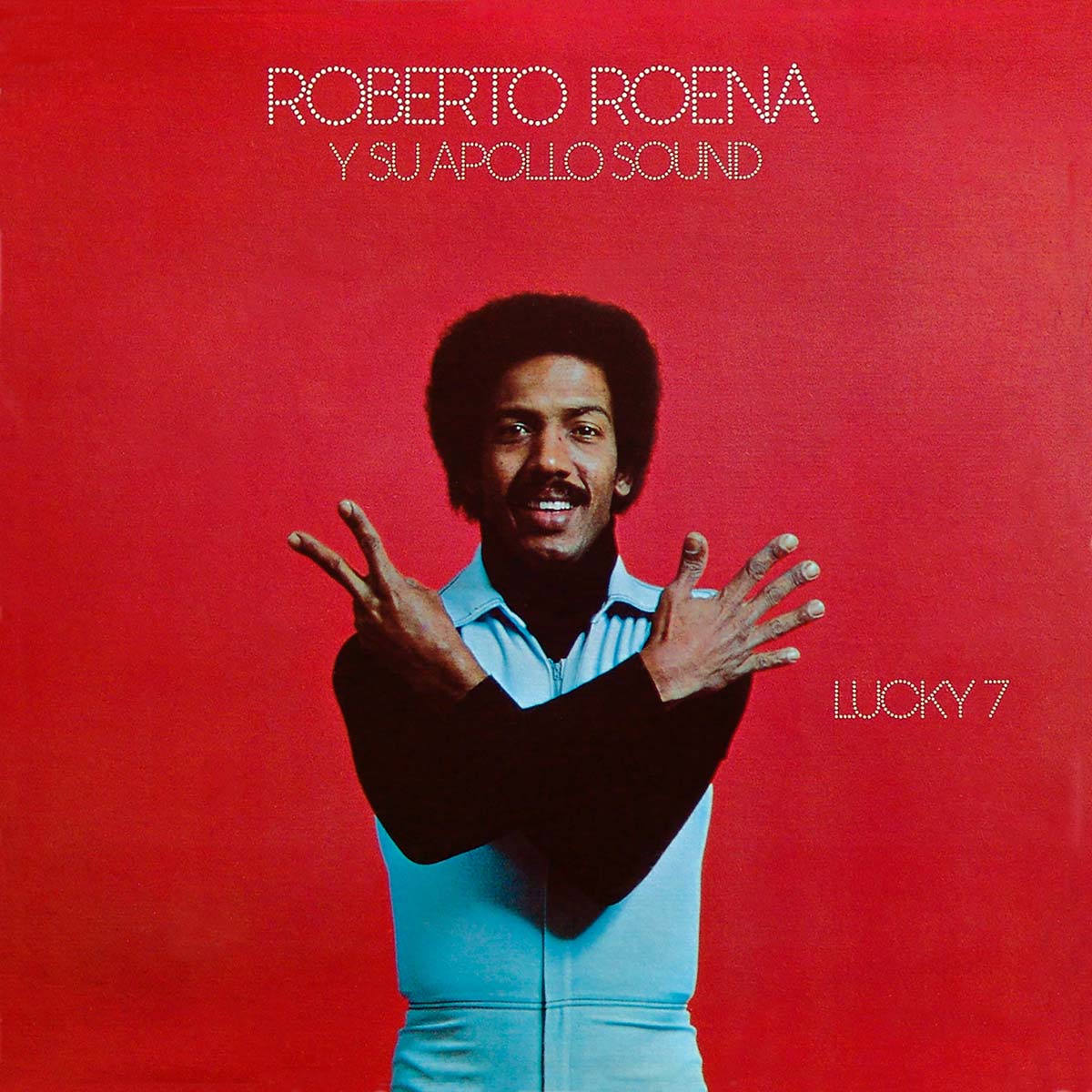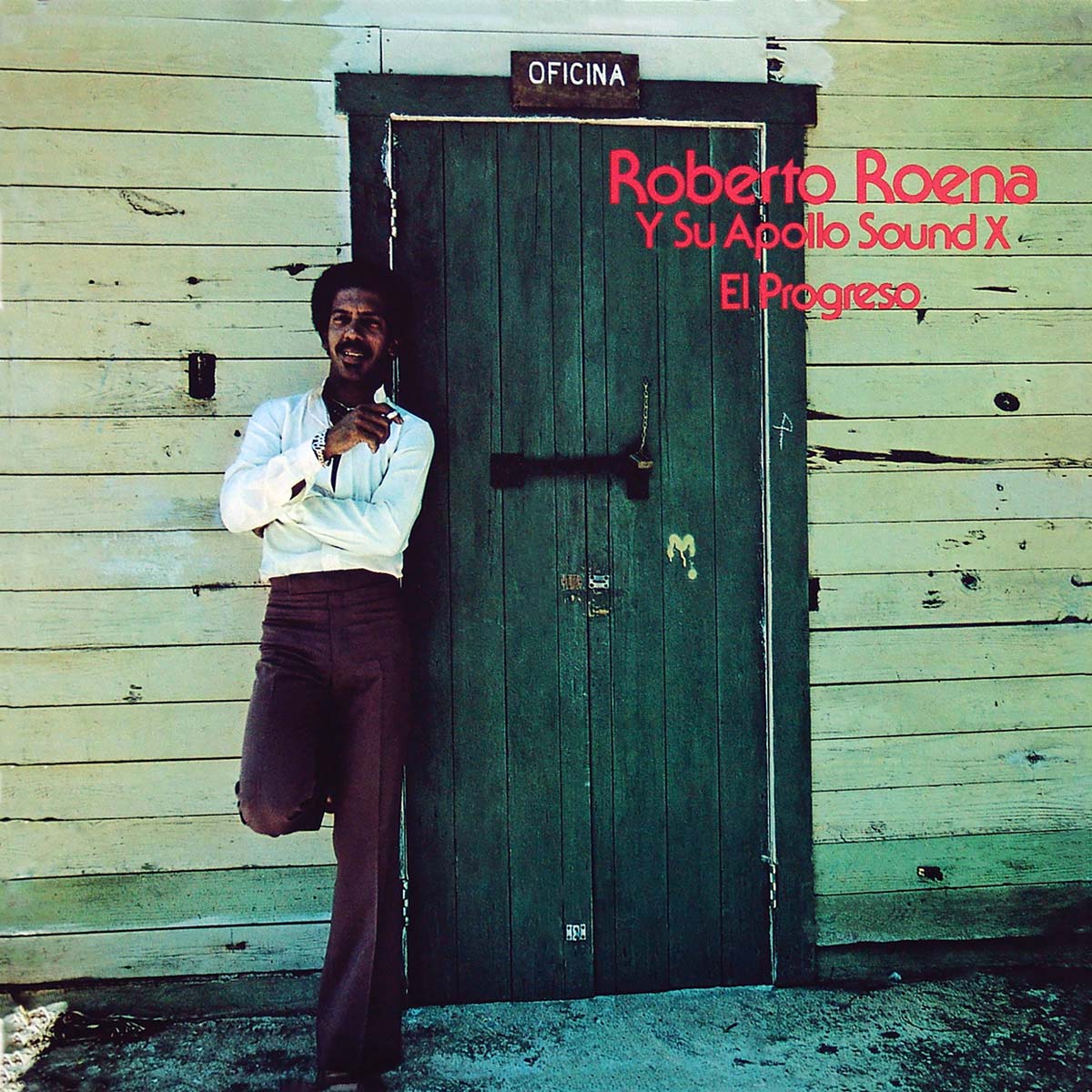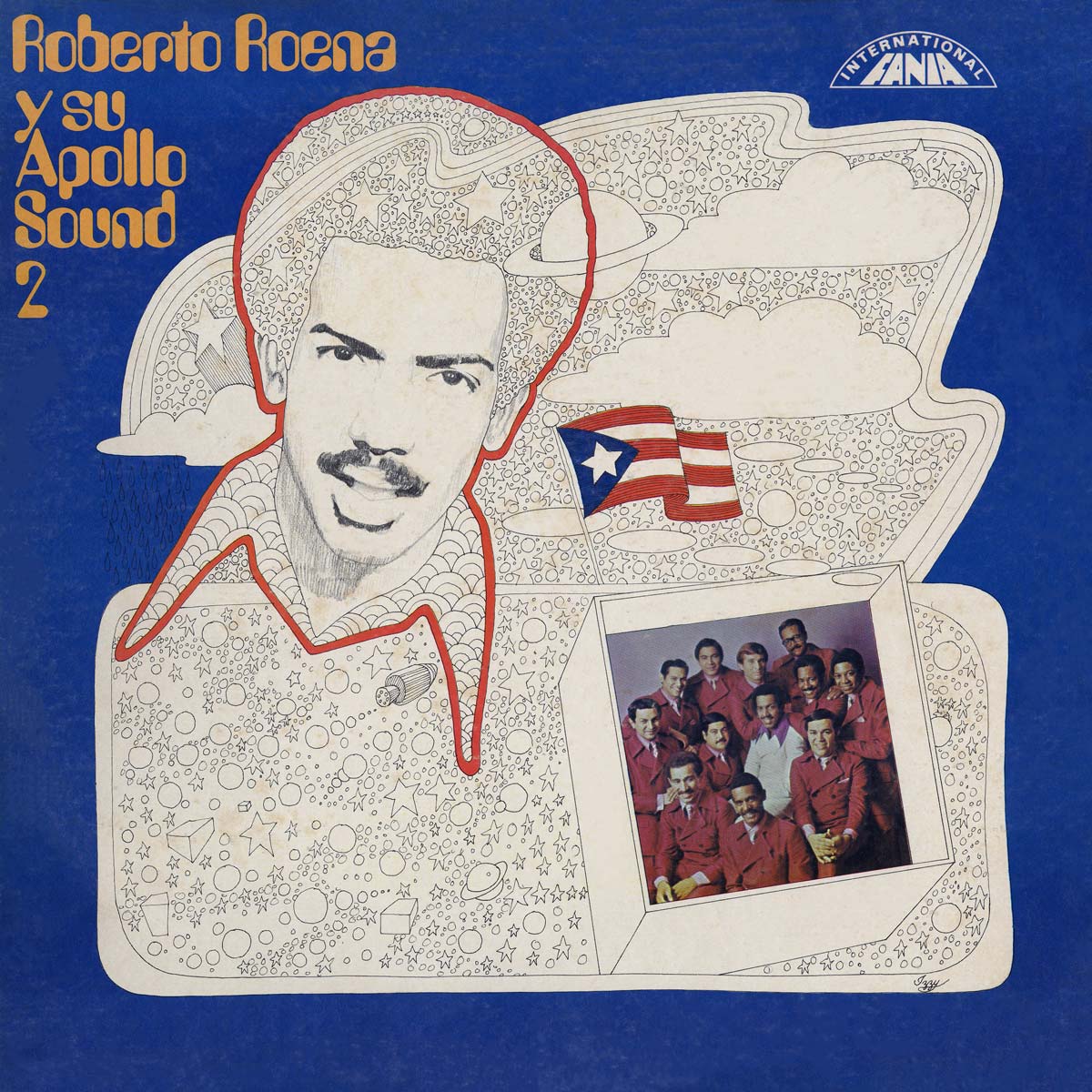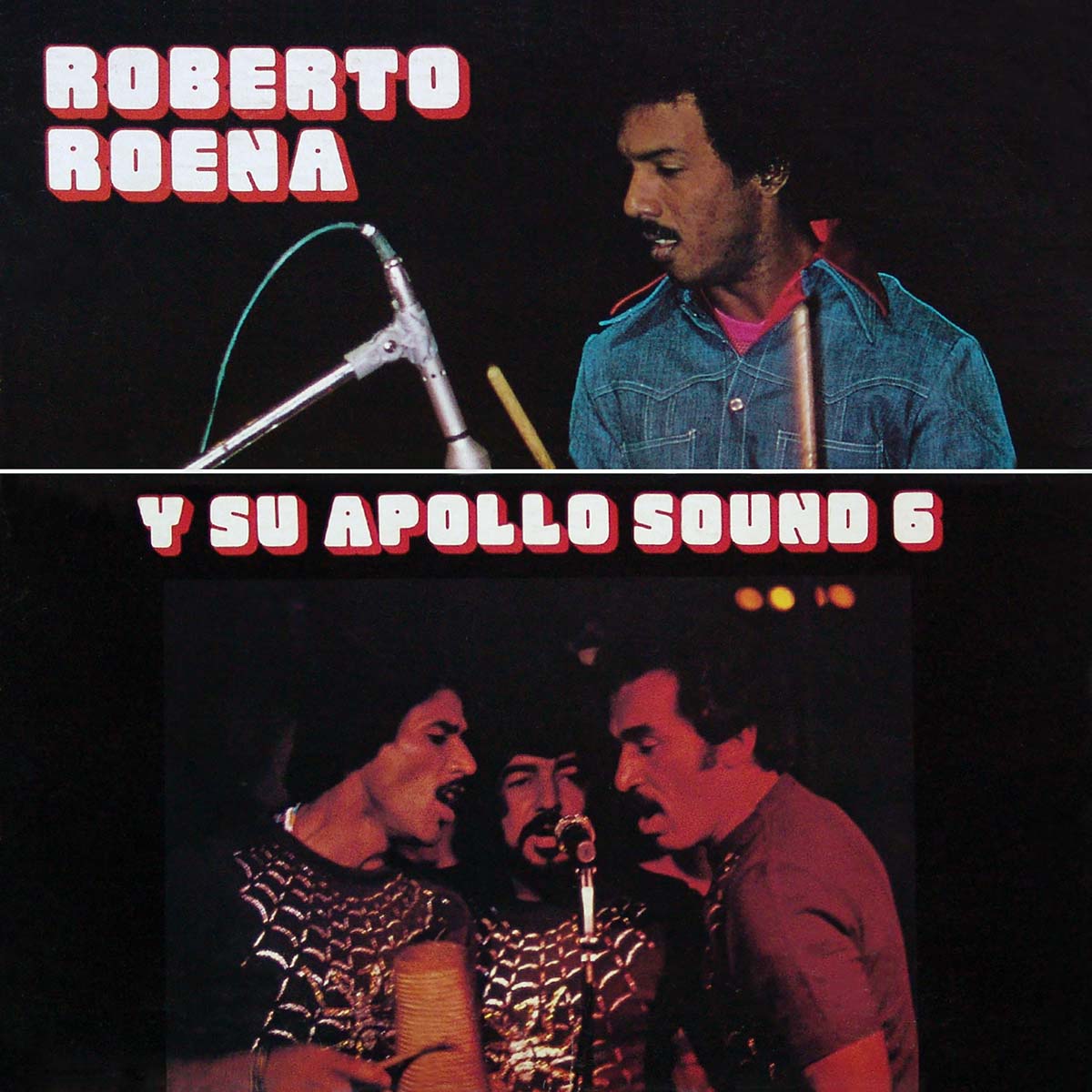
Roberto RoenaY Su ApolloSound 6 Roberto Roena By the time he released “Apollo Sound 6” in 1974, Puerto Rican bongosero Roberto Roena had blossomed as one of the most progressive bandleaders in the Afro-Caribbean genre. Roena has been criticized by many for his lack of formal musical training. Albums such as this one, however, suggest that having something to say may be much more important than any conservatory schooling.
What Roena lacks in virtuoso chops, he more than compensates for it with the purity and originality of his vision. In Puerto Rico, commercial success was never a problem for Roena. His debut effort with the Apollo Sound included the smash Tú Loco Loco, Y Yo Tranquilo, paving the way for a healthy number of hit singles throughout the ’70s and early ’80s. Artistically, it was the Apollo’s fifth release in 1973 that saw the bandleader expanding the boundaries of his sound. Besides including the phenomenally successful Cui Cui– an endearing slice of tropical pop– he merged the Afro-Cuban tinge with heavy touches of r&b and American funk on the electrifying “Que Se Sepa,” which to this day stands as one of the most intriguing gems in the Fania treasure trove. In fact, it was Roena’s omnivorous musical taste that made the Apollo Sound so hip. In later years, he would experiment with Brazilian rhythms– an innovation that would become one of the band’s trademark aesthetic quirks. Roena flirted openly with samba, funk, jazz and rock’n’roll. He was inspired by the brassy sound of early ’70s rock groups like Chicago and Blood, Sweat & Tears. And yet, his sound was undeniably tropical and stubbornly Puerto Rican. It was reckless and energetic, but still marked by the elegance of spirit (that light, restrained swing) that defines quintessential boricua orchestras like El Gran Combo and La Sonora Ponceña. “Apollo Sound 6” opens with “El Que Se Fue”, a heartfelt tribute to Puerto Rican crooner Tito Rodríguez, who had died in 1973 at age 50. It is followed by “Traición”, the session’s biggest hit, and arguably its highest point. It begins with subtle atmospherics– sharp touches of bongoes, smooth vocals and delicate piano lines– leading to a climax of fiery coros and breathless brass riffs. Ironically, Roena began his career as a dancer, not a musician.
He was discovered by Puerto Rican salsa pioneer Cortijo and groomed as a percussionist. When part of Cortijo’s band defected the orchestra in order to form El Gran Combo, Roena chose to remain with the maestro. Eventually, after Cortijo had moved to New York, he finally joined El Gran Combo, staying with Raphael Ithier’s group for a number of years. Roena’s first effort as a solo artist came with his band Los Megatones. In 1970, he formed the more promising Apollo Sound, named after the historic launch of the Apollo 12 rocket. Music industry insiders frowned at the creation of an all-star group whose bandleader was a bongosero with limited musical ability. Roena proved them all wrong. Soon enough, he was invited to perform with the Fania All-Stars. “Apollo Sound 6” is generally regarded as the one album where Roena finally proved to the world that his band occupied a place of honor within Puerto Rican salsa. As the record comes to an end with the stirring “Herencia Rumbera”, a young Endel Dueño performs a gutsy timbales solo, followed by a much needed declaration of principles: Este es el aporte del Apollo Sound a la música latina. This is the Apollo Sound’s contribution to Latin music. Credits: Roberto Roena – Bongo, Leader Mario Alvarez – Trumpet Dario Moralez – Trumpet Miguel Rodríguez – Tenor Sax, Flute Julio Merced, Jr – Trombone Mario Román – Piano Jappy Castro – Bass Papo Clemente – Conga Endel Dueno – Timbales Pete “El Conde” Rodríguez – Maracas Elliot Randall – Guitar (“Que Se Sepa”, Ese Soy Yo”) Harry Viggiano – Tres (“Cucarachita Cucarachon”) Guitar (“Es Que Estas Enamorada”, “Herencia Rumbera”) Vocals – Sammy González, Tito Cruz, Frankie Calderón Chorus – Adalberto Santiago, Paquito Guzmán, Mario Alvarez Producer – Roberto Roena Recorded at – Good Vibrations Sound Studios Engineer – Jon Fausty Arrangements – Julio Merced (“El Que Se Fue “), Luis Ortiz (“Traicion”, “Parece Mentira”), Jorge Millet (“Cucarachita Cucarachón”, “En Mis Rosales”, “Herencia Rumbera”), Bobby Valentin (“Que Se Sepa”, “Ese Soy Yo”), Elias Lopes (“Es Que Estas Enamorada”) Original Album Cover Photography – Victor Camilo Original Album Back Cover Photography – Lee Marshall, Jose Florez Original Album Design – Izzy Sanabria
Written by Ernesto Lechner


